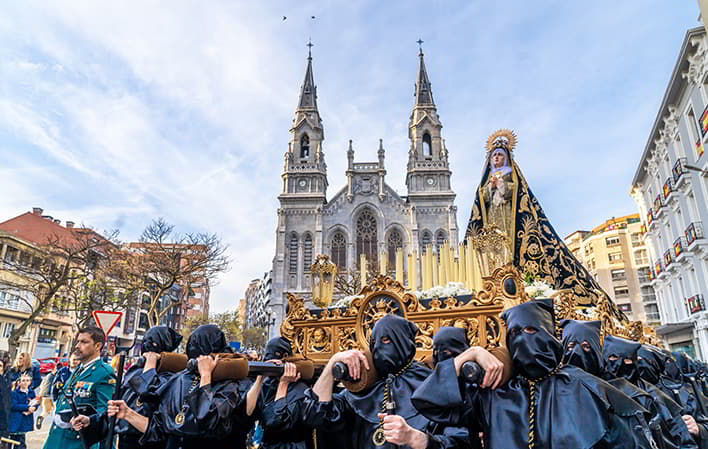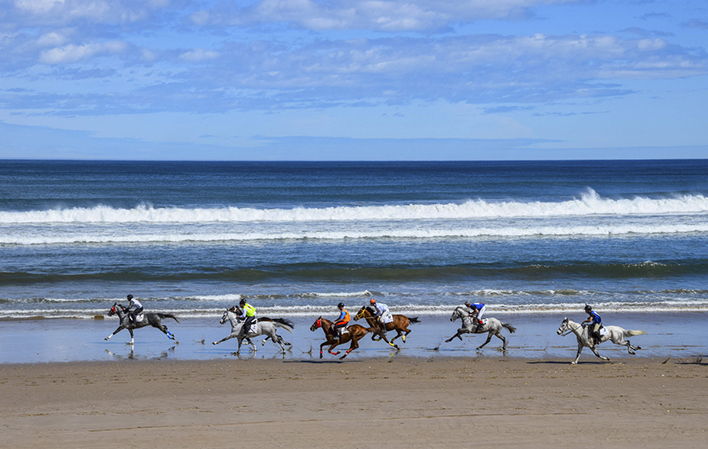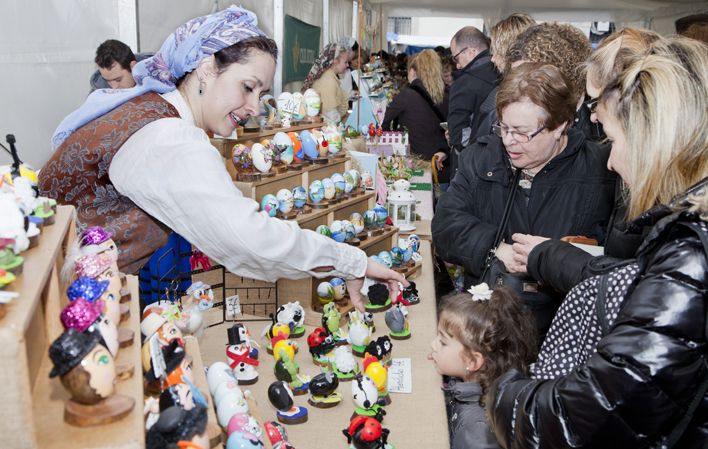Back Discover Easter Week in Asturias

Discover the excitement of Easter Week in Asturias
Come and experience Easter Week in Asturias. Enjoy your holidays discovering some Festivals of Tourist Interest.
Easter in Asturias is a time of traditions, processions, events and alternative plans. An ideal time to come to Asturias, to feel and to enjoy a holiday or a getaway to the fullest, both in the cities and exploring rural tourism.
History of Easter Week in Asturias
The history of Easter Week in Asturias is intense and extensive, and dates back to the Council of Trent, held in the 16th century, which introduced important changes in the Catholic Church at that time, which were decisive for the birth of Easter Week as we know it today.
The rise of the Brotherhoods, which began in the 16th century to relive the Passion and Death of Christ, also reached Asturias, and so in 1622 the Brotherhood and Brotherhood of Nuestro Padre Jesús Nazareno was already in existence in Oviedo/Uviéu. Likewise, the first penitential brotherhood documented in Oviedo/Uviéu was that of Misericordia y la Orden Tercera de Penitencia (Mercy and the Third Order of Penitence), which had its headquarters in the old convent of San Francisco.
Furthermore, in Luarca/Ḷḷuarca in 1682, the Real Hermandad de Nuestro Padre el Buen Jesús Nazareno de Luarca (Royal Brotherhood of Our Father the Good Jesus of Nazareth of Luarca) began its activities, establishing a School of Christ there.
So the Baroque in the 17th century was the seed of the Semana Santa in Asturias, which later in the following centuries, had periods of greater or lesser splendour, depending on who governed in Spain. We reach the convulsive 20th century and it was in the 40s when the brotherhoods reappeared, only to regress in the 60s, and to recover their boom from the 80s and 90s of this century onwards.
Nowadays, Easter Week in Asturias has numerous brotherhoods and processions, and is experiencing a real boom!
Curiosities of Easter Week in Asturias
Holy Week in Asturias preserves curious and happy traditions. One of them is to wear new clothes for the first time on Palm Sunday, as popular memory has it that "whoever does not wear new clothes on Palm Sunday has neither hands nor feet".
In addition, another of the most beautiful traditions is that on Palm Sunday, the godchildren take the palm to their godparents, who hang it from their balconies or keep it in their homes until the following year. Although it is true that a more recent tradition is to give the godmothers, instead of the palm, a bouquet of flowers.
On the other hand, after receiving the palm from the godchildren - or even if they do not take it - at the end of Holy Week, there is a tradition for the godparents to give them a gift. Some still opt for a cake or a chocolate figurine, with types that are renewed according to fashion, along with the typical Easter egg or bunny figurines. Although the bun - the name given to this gift - does not necessarily have to be a sweet, it can in fact be another type of gift. And by the way, tradition says that this annual gift from the godparents ends when the godchild marries.
A colourful and tastytradition are the shop windows and displays of the confectioners' shops, which display the best works of their master chocolatiers inspired by monuments, characters and all kinds of creations and recreations.
When it comes to cakes, many towns in Asturias have their own traditional creations, including the Roscón de Pascua de las cuencas mineras, a puff pastry filled with almonds, meringue and coloured feather decorations, which can have several tiers. The predecessor of this roscón was the famous Pegarata, a bun made with bread dough and shaped like a cake in which boiled eggs are embedded, which can be four, six or even twelve, as it all depends on the size of the pegarata, and which also contains chorizo, bacon and ham.

Another very typical Easter bun is the traditional Mantecado de Avilés or Mantecado Imperial de Avilés, which used to be given by the godfathers and godmothers of the city to their godchildren on Easter Sunday. Today it has become a typical Easter dessert that everyone buys or makes, because it is delicious.
Torrijas, slices of bread soaked in milk or wine and coated in egg batter, fried and sweetened, are another of the most popular Easter sweets in Asturias. There are also pestiños, a sweet made with a dough of flour and eggs which, cut into small, thin pieces, is fried in plenty of oil and then dipped in honey or sprinkled with sugar. And of course the casadiellas, very Asturian, which are eaten all year round at celebrations, including Easter.
Not forgetting that some brotherhoods have the tradition of accompanying so many sweets with a special lemonade, made from lemon juice, homemade and various liqueurs, adding cinnamon and sugar.
Festivals of Tourist Interest in Asturias
Easter Week in Asturias offers many events and attractions. Among them are the Asturias Festivals of Tourist Interest, seven of which are held during the Easter holidays.
Easter Week in Avilés
Easter Week in Avilés has been declared a Festival of Tourist Interest in Asturias since 2003 precisely because of the history and quality of its processions, which have been held without interruption since 1948, and have their roots in the tradition of brotherhoods and processions that have been organised in this council since the 17th century.

There are 9 brotherhoods in the city with more than a thousand members, and during Holy Week, which begins with the Palm Sunday processions, there are more than 10 processions with 23 floats and 16 processional images. The processions in Avilés end on the Saturday of Glory.
In Avilés, the end of the calendar of processions gives way to another important festival declared to be of National Tourist Interest, the Fiesta del Bollo.
This festival is held on Sunday and Easter Monday. On Sunday there is a parade of floats and folklore groups, and on Monday, after mass in San Nicolás de Bari and the corresponding proclamation, there is a multitudinous fraternisation meal in the streets of the old quarter of Avilés.
Incidentally, the festival is named after the bun or sponge cake given by the godparents to their godchildren on Easter Sunday.
Easter Week in Villaviciosa
Easter Week in Villaviciosa is one of the oldest in Asturias, as its origins date back to around 1668, when the people of Mali began to commemorate the mysteries of the Passion and Death of Jesus of Nazareth.
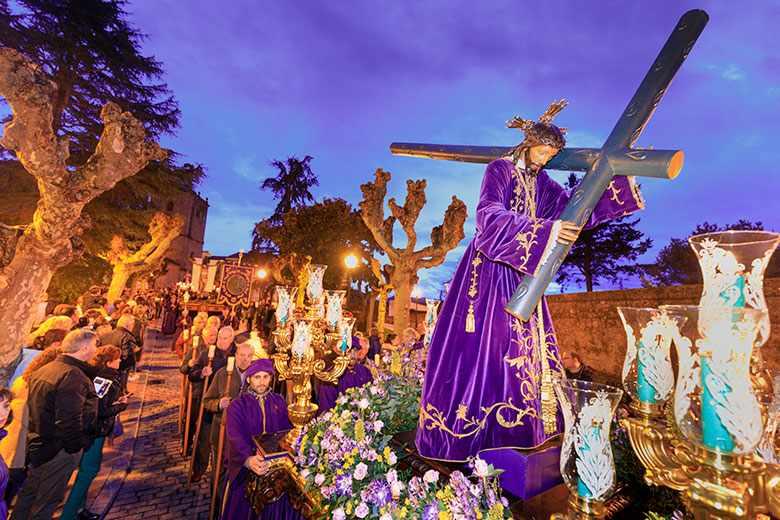
More than 300 years of religiosity, culture and art are combined in the Holy Week of Villaviciosa, which displays religious images of great artistic value. Likewise, the celebrations, especially on Good Wednesday and Good Friday, are particularly significant, and on these days you can witness the Encounter and the Descent from the Cross or Desenclavo (Descent from the Cross or Disenclavo), true autos sacramentales of great dramatic force.
Living Stations of the Cross in Villanueva de Oscos
The village of Villanueva de Oscos makes a display of imagination and devotion during the Easter holidays, staging a popular theatrical representation of the Passion according to Saint Mark on Maundy Thursday. This event, the Living Stations of the Cross, is widely attended by local residents.
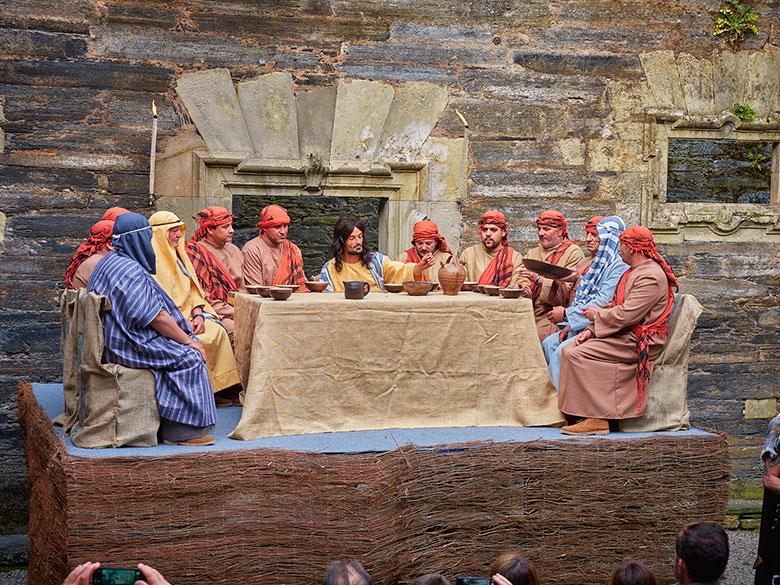
Ribadesella Beach Horse Races
The beach of Santa Marina, in Ribadesella/Ribeseya, becomes every year a natural racecourse of immense attraction for the thousands of enthusiasts and tourists who come there to feel and enjoy the strength and beauty of the Ribadesella Beach Horse Races, one of the most original events held in Asturias. This year, as a prelude to Easter Week, on Saturday 12th April from 11 a.m. onwards, the Horse Races take place at the Ribadesella - Santa Marina Beach racecourse in three categories.
The setting of this urban beach in Riosella is truly spectacular. A series of buildings of Indian architecture, representative of a whole period of Asturian history, mark out the seafront promenade. In addition, the chapel of the Virgen de Guía to the east, and the cliffs of Punta'l Pozu to the other - with their dinosaur footprints - complete a very striking landscape. And it is in this scenery where the Horse Races put their note of plasticity and sport.
Salmon Fair in Cornellana
The Salmon Fair, which this year celebrates its 25th anniversary, is an ideal opportunity to discover Corniana/Cornellana and all the natural and cultural beauties of the surrounding area of the council of Salas. The month of April, when the closed season for fishing with death is open, is the ideal time for this original event, which this year will be held on 12 and 13 April, coinciding with the start of Easter Week, and is dedicated to salmon and their environment.
In addition, the fair has the added attraction of the auction of the Campanu de Asturias ( the first salmon of the season), which becomes a social, sporting and cultural event.
Parallel to the fair, activities related to the attractions of Corniana/Cornellana and the Narcea river are programmed, such as a guided salmon route, or some visits to the imposing monastery of San Salvador de Cornellana, one of the most significant landmarks of the Way of St. James.
Artisan and Ecological Market of Gijón
The Plaza Mayor in Gijón/Xixón is the venue for this market, which will be a meeting point for Asturian crafts and gastronomy for four days at Easter.
Woollen blankets, leather bags, jet earrings, watercolour landscapes, ceramic bowls or wood carvings among an endless number of pieces filled with the art of the expert hands of the craftsmen.
Almond sweets, fruit preserves, wild boar sausages, goat's cheese, a selection of vegetables and marc liqueurs fill the market with flavour and aromas. Traditional, local and organic products to make sitting at the table a pleasure for the senses.
Other Holy Weeks in Asturias to enjoy
In addition to the classic and well-known Festivals of Tourist Interest, other places in Asturias celebrate Holy Weeks to fully enjoy this time of leisure.
Oviedo/Uviéu
Easter Week in Oviedo/Uviéu has a great tradition, and in addition to the religious events typical of these dates, there is a wide cultural and gastronomic offer, with the famous "Bocados del Cofrade" as the protagonists.
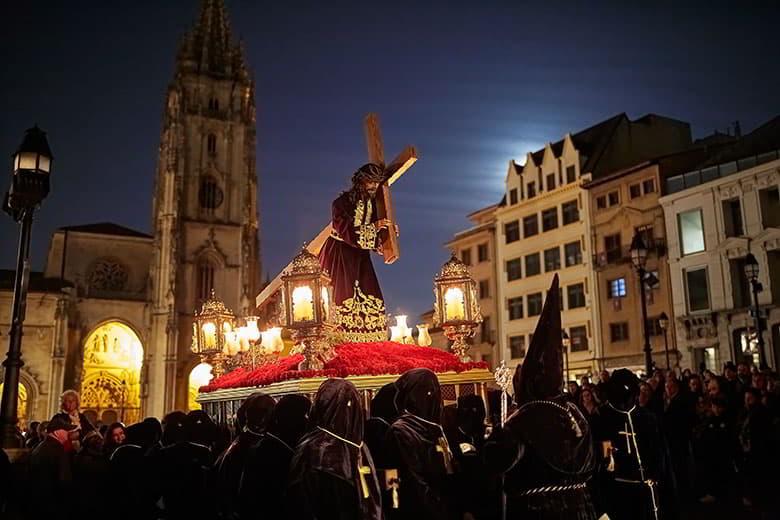
On Palm Sunday, the palms take centre stage, filling the stalls of the El Fontán market from days before along with the laurel branches, and it is quite a spectacle to take a stroll around this place. From that moment until Easter, different processions are held in the city, whose origin dates back to the 16th century, although throughout history there have been periods of decline and even suspension, with a recovery and boom beginning in the 90s of the 20th century. There are currently 9 processions.
Gijón/Xixón
The most important activities of Holy Week in Gijón/Xixón begin on Palm Sunday, with the blessing of the branches in the portico of the Chapel of Los Remedios. Throughout Holy Week there are processions that start from the Church of San Pedro and go through the historic centre of the city and the neighbourhood of Cimavilla. Of all of them, the most outstanding is the procession of the Borriquilla, which is held on Palm Sunday and is dedicated to children.
Gastronomy is an important part of the events of Easter Week in Gijón/Xixón, and during these days there is a Sidracrucis - a cider procession that stems from the tradition of the espichas at Easter -, and for this purpose the cider bus is set up, to enjoy visits to traditional cider houses.
Luarca/Ḷḷuarca (Valdés)
The Holy Week of Luarca/Ḷḷuarca has especially attractive processions, reaching its climax on Maundy Thursday, with the night-time ascent of the Nazarene, preceded by the Christs of several Luarca families, from the parish church to the hermitage of La Atalaya, under the attentive gaze of thousands of visitors.
The procession of the Holy Burial on Good Friday, and that of the Soledad on Saturday of Glory, complete the remarkable cast of the Holy Week of Luarca/Ḷḷuarca.
Lluanco/Luanco (Gozón)
Easter Week in Lluanco/Luanco is characterised by its great seafaring tradition. During the Easter holidays, various religious events and solemn processions take place around the old quarter of the fishing village. The most important processions are the Procession of the Callandinos, held on Good Friday, in which the Virgin is carried in silence from the parish church to the Chapel of the Conception. The other important procession is La Venia, also known as El Encuentro, which closes the Semana de Pasión (Passion Week) in Luanda with the staging of the scene on La Ribera beach.
The gastronomy of Easter Week in Luanco is special, and this is due to the Marañuelas Festival that is held during these days.
L'Infiestu (Piloña)
Easter Week in Piloña is notable fortheextensive programme of events that take place in L'Infiestu, the capital of the council. On Maundy Thursday there is a re-enactment of the Last Supper of Jesus in the parish church, as well as the Prayer in the Garden of Olives in the main square. On Good Friday , meanwhile, there is a living Stations of the Cross, an event that is more and more popular every year, and in which hundreds of actors take part.
Piantón (Vegadeo)
Easter Week in Piantón, in Vegadeo, is one of the most special and ancestral in Asturias. With more than 250 years of history, the celebrations honour Christ the Nazarene, Saint John, the Dolorosa and the Veronica, among other figures of Holy Week. The events begin on 13 April and continue until 20 April.
After Passion Week
Los Huevos Pintos de Pola de Siero (Painted Eggs of Pola de Siero)
The Fiesta de los Huevos Pintos de Pola de Siero is always held on the Tuesday following Easter Sunday. From the early hours of Easter Tuesday, the centre of La Pola Siero has an incredible atmosphere, mainly around the market where there are dozens of stalls decorated for the occasion where you can see and buy Pinto Eggs, with a wide variety of decorations and sizes, although most of them include in their artistic design motifs alluding to traditional Asturian culture, as well as different phrases and symbols.
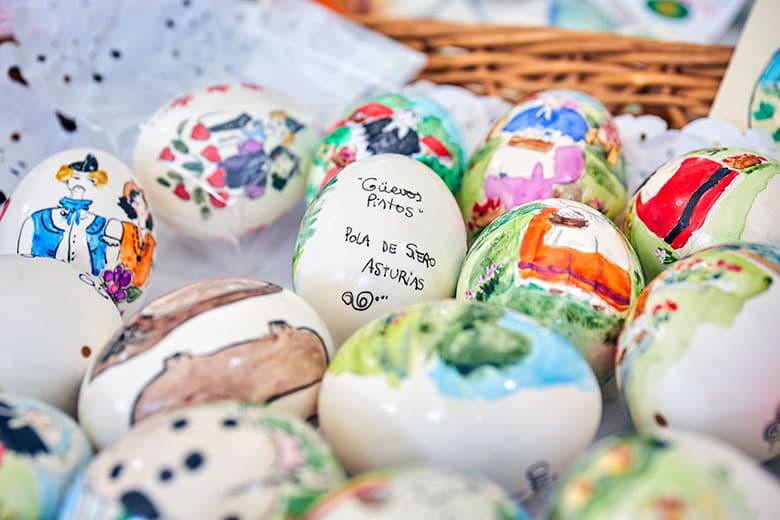
A very special moment of this festival is the Blessing of the Pinto Eggs in the Town Hall square, and from that moment onwards there is cider, good food, bagpipes and festivities, culminating in an open-air dance that lasts until the early hours of the morning.
Alternative family plans for Easter
Easter Week in Asturias offers you, in addition to the most typical processions and events of this time of year, a whole host of alternatives.
The different museums and cultural venues have a specific programme for the Easter holidays.
Jurassic Museum of Asturias
Children's workshop Bring the Jurassic to life
In this workshop full of games, paper systems are made to bring these animals back to life. We will discover what dinosaurs were like: what types there were, what they ate and some of the characteristics of these animals that dominated the world millions of years ago.
Not to be missed!
Dates: 12, 13, 16*, 17, 18, 19 and 20 April 2025, 11:00, 12:00, 13:00, 16:00 and 17:00 (*Wednesday 16 there is no 17:00 session).
Aimed at: children between 4 and 11 years of age
Temporary exhibition: The origin of life
How was the Earth formed? The Gondwana das Praehistorium Museum takes us to the origin of life through the materials and geological processes that were necessary for the formation of our planet.
The MUJA collaborates in this exhibition, created by the founder and president of the Museum Gondwana das Praehistorium, Mathias Michael Kuhl, with scientific content by Dr. Joachim Reitner.
Teverga Prehistoric Park
The Library of Eme by Mar Rojo Teatro
Eme's travelling library will be parked outside the Prehistoric Park in Teverga this Easter.
Eme is the librarian of Lugar, the only inhabited village on the Inaccessible Island. The villagers love to read, but one day, a gale blows away all the words in all the books on the island and the villagers fall into absolute sadness. To help his people, Eme decides to go in search of the lost words and stories with an old motorbike, the Biblioneta, where he stores the books he has collected on his travels around the world.
After the show, there will be a complementary activity, "El espacio de las letras", where children will be able to read in the travelling library, draw and write stories with the main character.
Date: Friday 18 April at 12:00 noon.
Aimed at: families with children aged 4 and over.
Palaeolithic art in the Trubia valleys is an activity developed by the Ecomuseum La Ponte, in collaboration with the Town Council of Santo Adriano and the Prehistoric Park of Teverga.
Enjoy a day to delve into Prehistory and learn first-hand about some of the most emblematic artistic manifestations of the Upper Palaeolithic.
The day starts in Tuñón to visit the Cueva del Conde (or Cueva del Fornu) and the Abrigo de Santo Adriano and discover the lines and animals that were engraved on its walls more than 20,000 years ago. After a stop for lunch in one of the local restaurants, the visit continues in the Prehistoric Park of Teverga, to learn about other aspects of European cave art and prehistoric lifestyles on a guided tour.
Date: 18 April 2025 at 12:00 noon in Santo Adriano and at 4:00 pm in the Prehistoric Park.
Aimed at: all audiences. Recommended for ages 6 and up.
Temporary exhibition Art, mathematics and gender
Francisco A. González Redondo has prepared this exhibition on the hypothesis that the most significant mathematical records of the Upper Palaeolithic were made by women, a subject to be dealt with in the exhibition Art, mathematics and gender in Prehistory, which we are opening on the occasion of Women's Day in the Park.
There are "abstract" symbolic prehistoric manifestations that contain a type of non-figurative record that can be interpreted from a "mathematical" perspective and could be accounting or even calendrical-astronomical notes. Our ancestors would prove to have already been endowed with the ability to record thought symbolically, an evidence of modernity in our species that would distinguish us from all previous ones.
This exhibition consists of 10 fully inclusive and immersive panels; each panel combines text and photos, includes a complementary bibliography and a QR with voiceovers of the texts in English, French, German and Spanish, as well as videos in sign language.

Asturian Pre-Romanesque Centre
Historical recreation camp with living museum, talks and demonstrations.
Our medieval camp is back! This year, immerse yourself in history and discover up close what life was like in the High Middle Ages with talks and live exhibitions on different aspects of civil and military life in the Kingdom of Asturias.
Highlights:
- Textiles and Fashion in the Early Middle Ages: learn about medieval textile work, from shearing and carding to spinning and weaving, with a special focus on natural dyes.
- Hygiene, Beauty and Health: discover how they looked after their health and beauty in the Kingdom of Asturias, and debunk some myths about medieval hygiene.
- Leather work: our craftsman will demonstrate how leather pieces such as belts and sheaths were made, revealing tanning and embossing techniques, as well as oriental and Muslim influences in the designs.
- Military life in the Kingdom of Asturias: explore the military panoply of the period and enjoy a combat exhibition by the Asturian School of Ancient Fencing.
Don't miss this unique experience to learn, enjoy and travel back in time, we are waiting for you!
Date: 17, 18 and 19 April during opening hours.
Aimed at: all audiences.
Treasure hunt to coincide with Easter Sunday.
Search as a family for the decorated eggs that we have hidden. Prizes will be awarded to those who find the most eggs, to those who find the biggest or the smallest or even to those who find more of a certain colour or distinctive.
Date: 20 April at 12:00 noon.
Aimed at: families with children aged 5 and over accompanied by an adult.
Ethnographic Museum of Grandas de Salime "Pepe el Ferreiro".
Demonstration of traditional crafts
Demonstrations of lathe work
Arturo Iglesias, the Museum's "torneiro", will show the public how the half-turn lathe works, the use of which led to the creation of a trade in its own right which, now extinct, was recovered in the Museum. It was used to make the crockery of the peasant household, which was almost entirely made of wood. During the live demonstration we will learn what these pieces were and how they were used.
Date and time: 17 April 2025, uninterrupted visits from 11:30 to 14:00 and from 16:00 to 19:00.
Forging demonstrations
Live demonstration of one of the most popular trades in traditional rural communities. In the forges of the ferreiros, all kinds of tools and implements were made that were used in construction, agricultural work, as work tools in other trades or in everyday life.
Dates and times: 18 April 2025, uninterrupted visits from 11:30 am to 2:00 pm and from 4:00 pm to 7:00 pm.
Demonstrations on wool processing and traditional weaving
Live demonstration of wool processing and traditional weaving that used to be carried out in peasant homes, by the artisan Mª Paz González Mesa.
Date and time: 19 April 2025, uninterrupted sessions from 11:30 am to 2:00 pm and from 4:00 pm to 7:00 pm.
Aimed at: all audiences.
Temporary exhibition "Asturias in Transit" (1960-1990). Photographs by José Vélez
José Vélez (Oviedo/Uviéu, 1931-2012), was one of the most active and influential photojournalists in Asturias and a reference in professional press photography during the second half of the 20th century.
With six decades of work and an archive of more than 200,000 photographs, Vélez captured all the transformations that have taken place in Asturias since his professional beginnings in the late 1940s.
This exhibition offers a synthesis of some of the events that marked the evolution of the region in the political, economic, social and cultural spheres between 1960 and 1990. Three decades of profound changes illustrated through the lens of José Vélez.
The José Vélez collection is kept at the Muséu del Pueblu d'Asturies, the result of a deposit made in 2018 by his wife María Aurora Álvarez and daughters, María, Eva and Elena. The photographs that make up this exhibition come from the exhibition held in 2024 in the Plaza de Trascorrales in Oviedo/Uviéu: José Vélez (1931-2012) Master of photojournalism in Asturias.
Dates: 10 April to 7 September 2025.
IV Photographic Marathon "Grandas in my lens".
The Friends of the Museum Association is organising the fourth edition of the Photographic Marathon "Grandas in my lens", an event to which lovers of photography and heritage are invited.
Date and time: 19 April 2025, from 11:00 to 18:00.
Aimed at: all audiences (minors accompanied by an adult).
Tito Bustillo" Cave Art Centre
Children's workshop "Hands on the brush and paint the panel".
We will experiment with paintbrushes, pigments and coloured stones to become Prehistoric artists and discover how our ancestors painted caves such as Tito Bustillo.
Date: 17, 18, 19 and 20 April at 12:00 noon.
Aimed at: children aged 4 to 11.
Family workshop "Going for salmon with harpoons".
The inhabitants of Tito Bustillo practised salmon fishing in the Sella. In this activity for the whole family we will learn how they did it and, by the way... will we manage to "catch" one for dinner? / We will make a harpoon and a funny salmon with which to try out the technique. Do you want to go fishing with us?
Date: 17, 18, 19 and 20 April at 16:00 hours.
Aimed at: families with children aged 4 and over.
As you can see, Asturias is an ideal destination for different experiences at Easter.
Here is a selection of the most outstanding events, but you can find many more plans and activities for Easter in Asturias.
The weather during Easter Week in Asturias
What the weather will be like at Easter in Asturias is always a recurring and necessary question when making holiday plans.
Usually at Easter in Asturias, the weather is spring, as it corresponds to the season of the year in which we are. And precisely because it is spring, it can be subject to some instability.
To be sure of the forecast, it is best to consult the Aemet website a few days before the start of Easter Week.
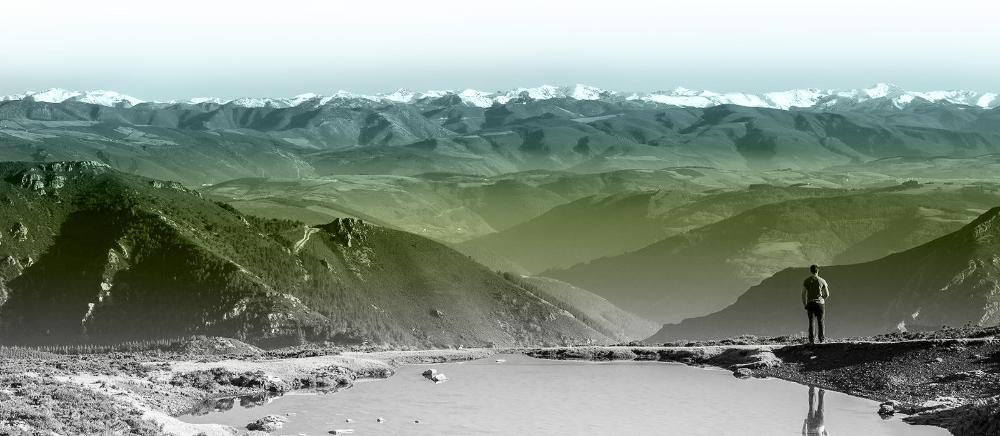
Subscribe to our newsletter and take advantage of offers, discounts, and news
Subscribe

